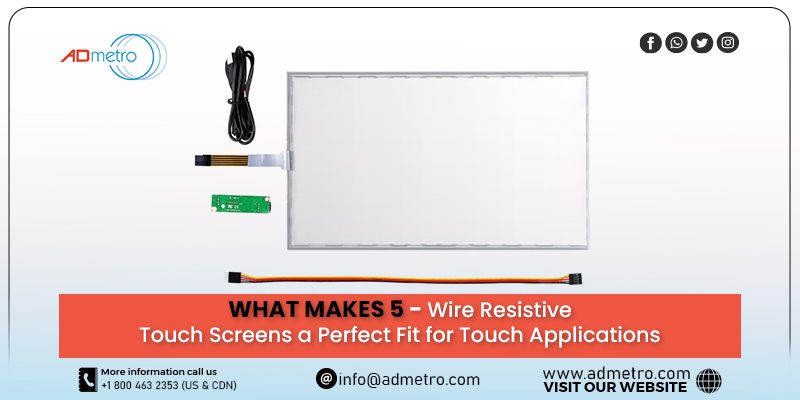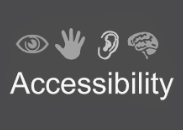Resistive touch screens have remained a perfect choice for nearly four decades. They feature two transparent conductive coated layers, usually made of Indium Tin Oxide (ITO), separated by dielectric spacer dots that create a small air gap. Touching the display interface brings the two layers into contact, causing a change in resistance. The controller detects the change and responds as per the touch command.
Resistive touch screens are of several types- 4-wire, 5-wire and 8-wire. Among these, 5-wire resistive touch screens are more advanced and widely used for applications.
5-Wire Resistive Touchscreens
Resistive touch screens comprise electrodes as essential components to detect touch commands. However, unlike its counterpart – 4-wire and 8-wire, 5-wire resistive touch screens feature specific configurations of electrodes.
In 5-wire resistive touch screens, electrodes are placed around the corners of the bottom conductive layer and connected to the flexible circuit tail of the sensor. The top layer is connected with just one wire and used as a voltage probe for the sensor. This configuration enables 5-wire resistive touch screens to offer many key benefits over other touch screen technologies.
Advantages of 5-Wire Resistive Touchscreens
- Typically, all resistive touch screens are durable; however, one powered by 5-wire technology offers more durability. Since the conductive layer that produces the voltage reading to ascertain both the X and Y touch position is on the bottom glass substrate, there can be no cracking of the conductive layer from flexing such as can happen on 4 and 8 wire sensors that use the flexible top switch layer to produce voltage to ascertain the position in either the X or Y plane. The 5 wire’s switch layer is only used as a no-load voltage probe to measure the voltages on the glass substrate which the conductive coating will never crack being static and never flexed. This means the 5-wire resistive design can last up to 30 times longer than a 4 or 8 wire type. A D Metro’s patented flagship product called ULTRA is a resistive sensor with a thin glass laminated front surface available in 4, 5, or 8-wire configurations. ULTRA resistive sensors vastly increase the service life of the sensor because the stiffer glass laminated switch layer does not allow it to be flexed sharply enough to crack the ITO conductive coating. Testing of a 5-wire ULTRA resistive sensor was stopped at 225 million touches with only minor cracking of the switch layer ITO. No degradation of the sensor’s performance was detected.
- Although capacitive touch screens are usually chosen over resistive touch screens, for several heavy-duty applications where operators have to wear gloves, resistive seems to be a better choice. Capacitive touch screens support only bare fingers or light gloves for operations, whereas 5-wire resistive touch screens support all types of touch commands. They are pressure activated and operated using a bare finger, stylus or even a heavily gloved finger.
- 5-wire resistive touchscreens are highly sensitive, so you don’t have to press the display surface hard to register touch commands. A light-pressure touch using any physical object will make 5-wire touch screens register the input.
Advanced Two-Touch 5-Wire Resistive Touch Screen Controller
In order to leverage the benefits of 5-wire resistive touch screens, A D Metro- the leading manufacturer and supplier of innovative touch screen solutions, offers a Two-Touch 5-Wire Resistive Touch Screen Controller.
This is particularly helpful in designing applications that require resistive touch sensors but also demand two-touch capability. This controller works with standard 5-wire resistive sensors and delivers a two-touch feature as required by Graphical User Interfaces (GUIs) in applications facing harsh environments that only resistive touch sensors can endure.
This innovative solution facilitates the following:
- At 100 touch points per second for single touch and 70 touch points per second for two-touch, the innovative Two-Touch 5-wire resistive touch screen controller offers fast and smooth touch operations.
- The controller also offers HID Plug & Play in Windows.
- Full two-touch operation, ideal for pinch, zoom, rotate and drag gestures.







